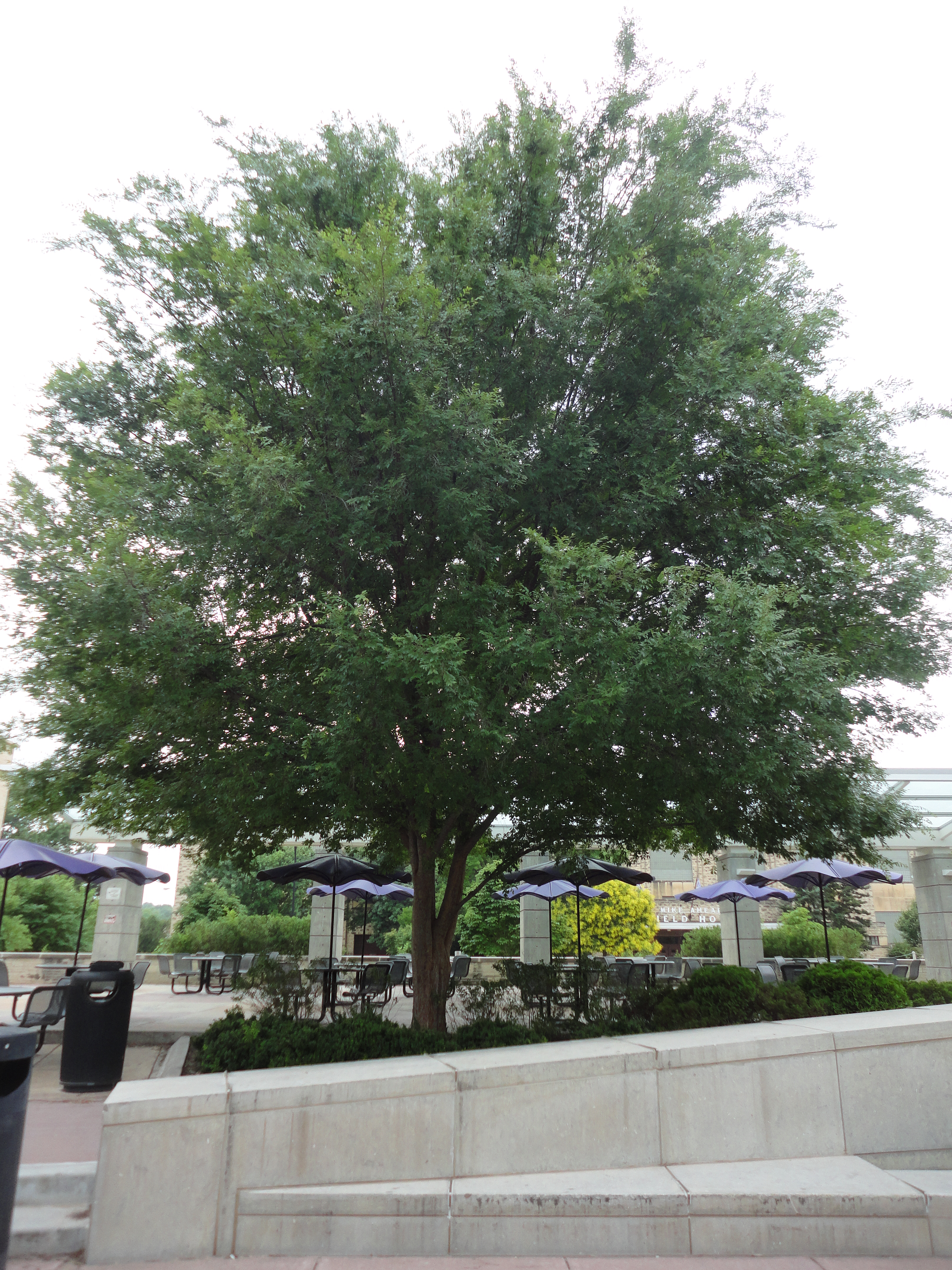Lacebark Elm
 Ulmus parvifolia, or Lacebark elm, or true Chinese elm, should not be confused with Siberian elm which is commonly called Chinese elm. It is a totally different species. Lacebark elm was introduced to this country from China.
Ulmus parvifolia, or Lacebark elm, or true Chinese elm, should not be confused with Siberian elm which is commonly called Chinese elm. It is a totally different species. Lacebark elm was introduced to this country from China.
Mature Size
It is a medium-sized tree with a round to oval crown. It has a moderate growth rate reaching a height of 35 to 40 feet and a crown spread of 30 to 35 feet.
Growth Rate
It grows 12 to 18 inches per year .
Leaves, Stems and Fruit
Leaves are simple, alternately arranged on the stem and are 1 to 1 1/2 inches long with a toothed edge. They have a medium to dark green color. Young twigs are slender, reddish-brown turning gray-brown with age. Bark is rough and flaky. Male and female flowers are borne on the same tree with seeds ripening in the fall.
Use
Windbreaks - Lacebark elm is an excellent windbreak tree. Since it is not a large tree, its growth pattern and foliage characteristics make it ideal for planting between the shrub and tall center row of a multi-row windbreak.
Firewood - Lacebark elm is a good firewood species especially on poorer sites. The wood provides moderate heat yield.
Adaptation and Soil
Lacebark elm has adapted statewide and is drought resistant. It can be planted on a variety of sites throughout the state although it is recommneded primarily for western parts of the state.
Spacing
In row windbreak spacing ranges from 10 to 15 feet and in firewood plantings, the spacing can vary from 4 x 9 feet to 6 x 12 feet.
Culture
One-year-old, bare root seedlings, 18 to 24 inches tall are used in plantings. With good weed and grass control, a high rate of survival can be expected.
Pests
lacebark elm has few pest problems. It is resistant to elm leaf beetle and is also highly resistant to Dutch elm disease and elm yellows (phloem necrosis).
Soil Information
| Average Height in 20 Yrs: | |
| -Eastern | 24-28 ft. |
| -Central | 22-26 ft. |
| -Western | 20-24 ft. |
| Growth Rate: | Fast |
| Native Species: | Introduced to Kansas |
| Windbreak Value: | High |
| Wildlife Value: | Medium |
| Lumber Products: | No |
| Fuelwood Products: | Yes |
| Drought Tolerance: | High |
| Texture: | 1,2,3 |
| Soil Saturation: | No Tolerance |
| Salinity Tolerance: | No Tolerance |
| pH Range: | 4.8-7 |